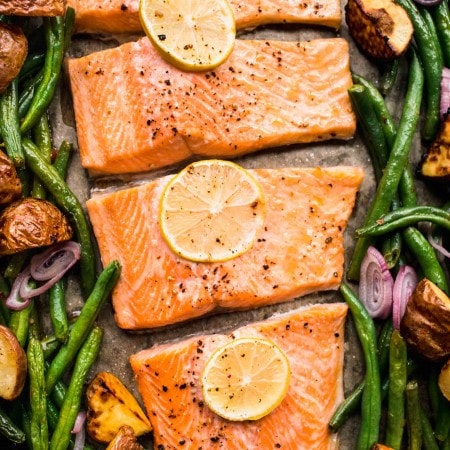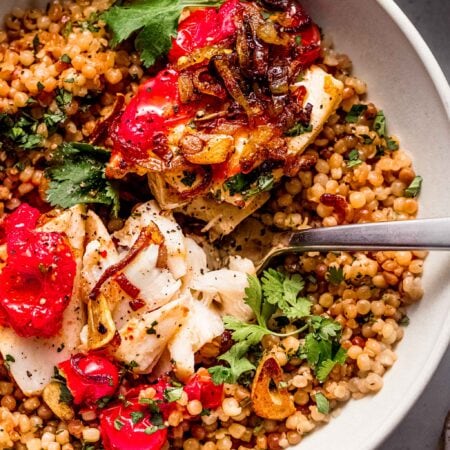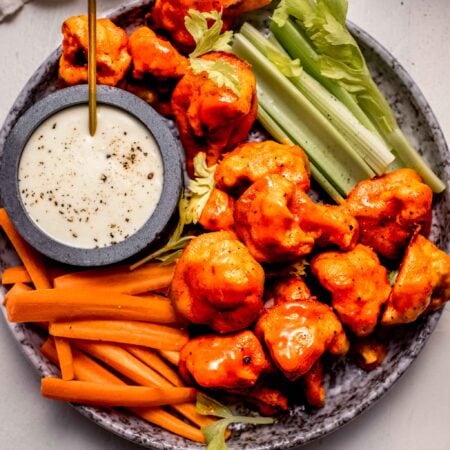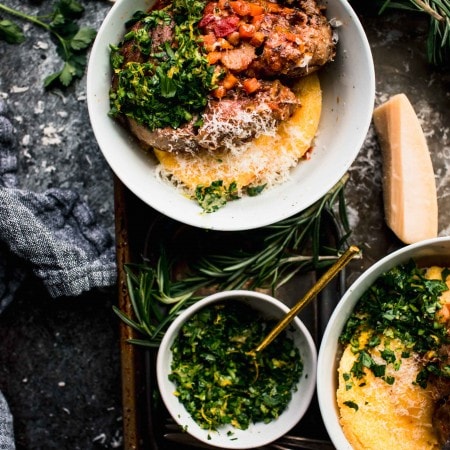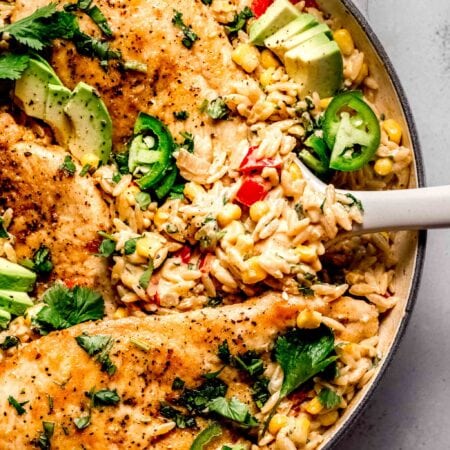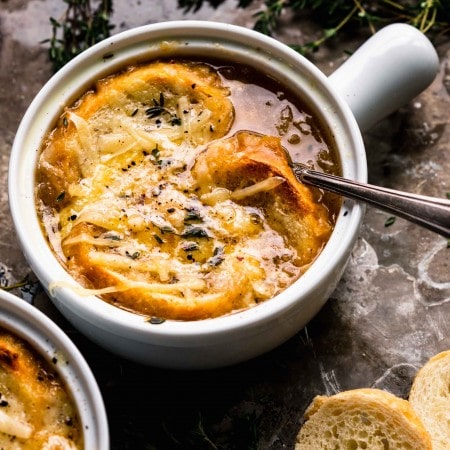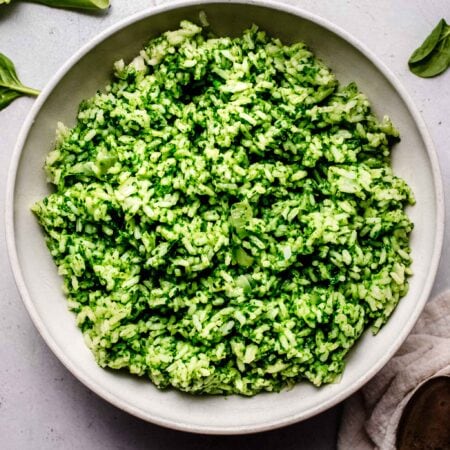Have you ever wondered what the differences are between trout and salmon? This handy guide dives into their key differences, as well as includes cooking tips, food and wine pairings, and what to look for when shopping for the fish.

Learn more about salmon and steelhead in my guide, Steelhead vs. Salmon: The Key Differences!
Are trout and salmon the same?
Trout and salmon are two of the most popular types of fish on the market. They’re plentiful throughout North America, have mild flavors, and are commonly used in all kinds of recipes, from Tomato Poached Fish to Smoked Salmon Dip.
But are they the same? Not really! They look the same but the color of their flesh, textures, flavors, and pairings are all very different.
The key differences between the two are explained in this handy guide, along with cooking tips and delicious recipes to try. You’ll be an expert on the differences when you’re done reading.

All about trout
Trout is a general term for a variety of primarily freshwater fish native to North America. Steelhead trout (a form of rainbow trout) are the only variety that live in the ocean. They’re one of the most popular varieties and have the most similarities to salmon (as it’s a salmon relative!).
The other differences, however, are pretty apparent:
Appearance
- Trout have round heads and bodies.
- Their scales can have dark or black markings on the back and lighter gray scales throughout the rest of their body (but this can depend on the environment in which they live).
- Its flesh can vary in color. You’ll likely see filets that are creamy white or pink in color, although some can even be as red as a salmon filet.
Taste
- Generally, trout has a mild flavor. Rainbow trout, in particular, is almost nutty tasting.
- The texture is firm, yet slightly soft and flaky.
- Wild-caught trout tend to taste better than farm-raised because of the variety in their diet.
- Farm-raised trout, however, can be fattier (which tastes delicious) and can contain higher levels of omega-3 fatty acids.

How to shop for trout
For the very best seafood, always head to your local fishmonger. They have the knowledge to help you choose the very best, freshest fish and can even help you prepare it. These tips will help you get started:
- You can buy both trout filet or whole trout from your local fishmonger or grocery store.
- The fish shouldn’t smell fishy. You want a fish that has a very mild, almost “fresh from the lake” smell.
- The shinier looking the filet, the better.
- It also shouldn’t have any discolorations or blemishes.
Tips for cooking with trout
Trout is a seafood that’s easy to prepare for quick family dinners or healthy lunches. It’s delicate though, so use these cooking tips before you get started:
- Store the fish in the fridge for up to 2 days if you aren’t cooking it right away.
- Keep the seasonings simple. All you need is butter, lemon juice, garlic, a little salt and pepper, or fresh parsley to help the trout shine.
- Trout also tastes delicious with a light flour coating before being sauteed in oil.
- Both the filet and whole fish can be baked, pan seared, broiled, and grilled.
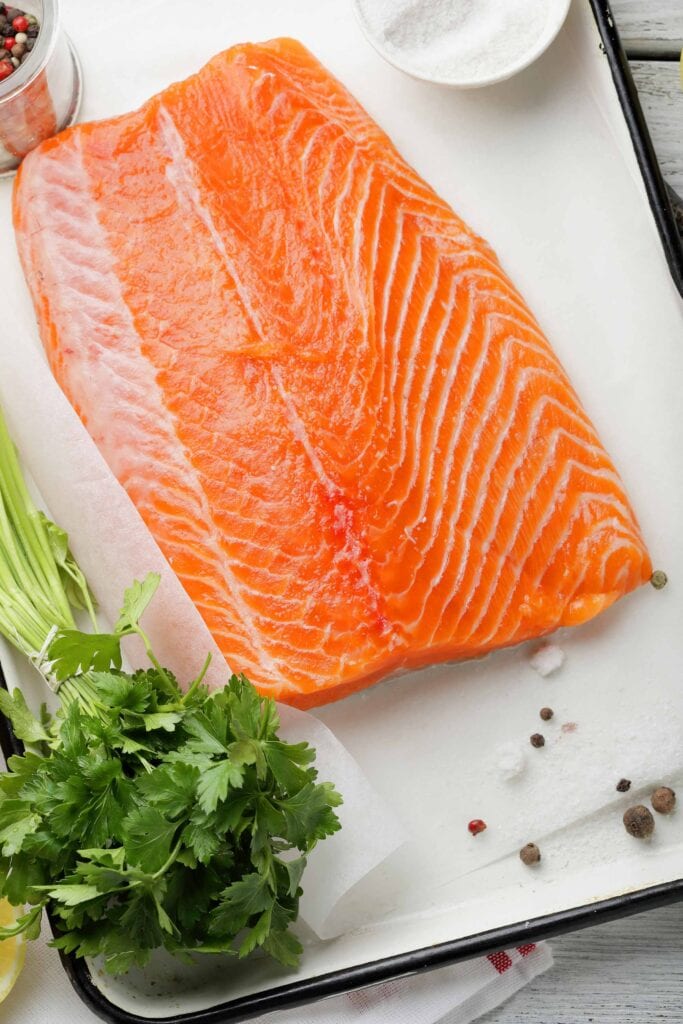
Wine pairings
Most fish recipes pair particularly well with crisp white wines, and trout is no exception:
- The light and mild flavors are exceptional next to a glass of Sauvignon Blanc and Riesling.
What goes well with trout?
Stick to light and fresh sides to bring out the trout’s beautiful flavor, such as:
All about salmon
Most salmon live in the ocean and only return to freshwater to spawn and mate. There are many varieties of salmon that are popular throughout North America, from sockeye salmon to Atlantic salmon to chinook salmon.
They’re closely related to trout but have significant differences:
Appearance
- Almost every variety of salmon has spots all over their fins and backs. Most are silver in color but change to brown, red, and pink during breeding season.
- They have very long and slender bodies.
- Salmon flesh has a very distinguishable bright red or pink color, helping it stand out from the rest.
Taste
- Salmon is light and buttery all on its own. You barely need to add any seasonings!
- The filets are also tender, flaky, meaty, and rich.
- The flavors will vary depending on how you cook salmon, but it’s generally very mild.
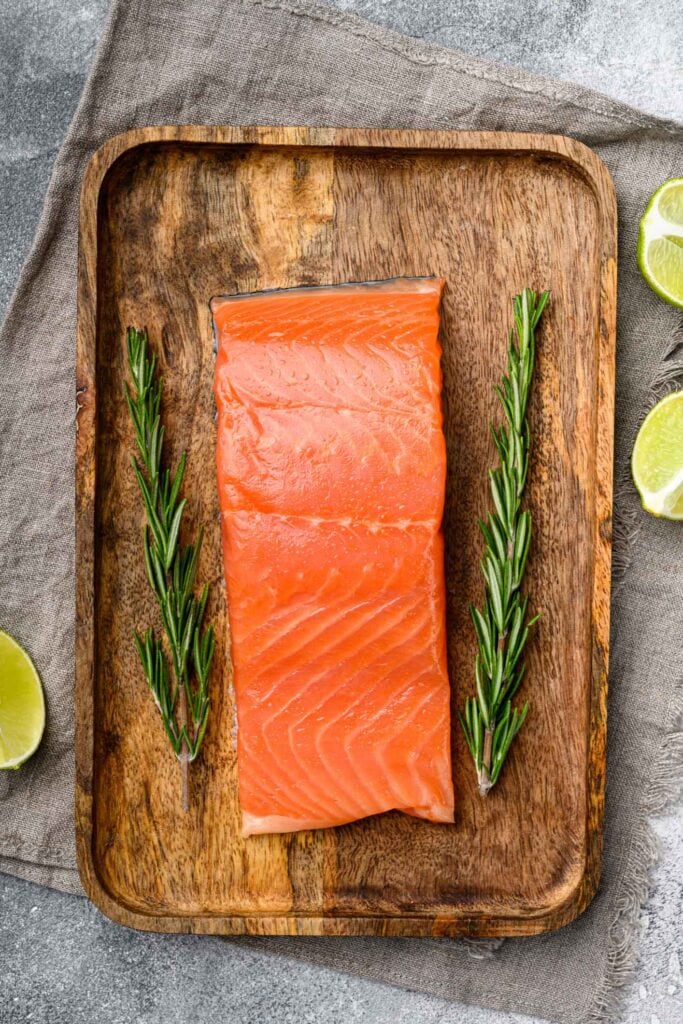
How to shop for salmon
You can find fresh or frozen salmon in almost any grocery store nowadays, but for the very best quality, head to your local fishmonger.
- Pacific and Atlantic salmon are the more common types you’ll find at the market or grocery store.
- Make sure that the salmon filet looks super moist and doesn’t have any brown spots or blemishes.
- Check the skin around the edges of the salmon filet — they shouldn’t be brown or look like they’re curling up around the edges.
Tips for cooking with salmon
Salmon is so flexible and can be cooked any way you can imagine! However, these tips will surely help you out if you’re new to cooking the fish:
- Salmon can be grilled, pan fried, baked, poached, slow roasted, smoked, and even cooked in the sous vide or Instant Pot.
- Cook it with or without the skin on. The skin, once crispy, is so delicious!
- Cook the salmon with simple seasonings, like butter, lemon, or dill. When it’s done, leave it as-is or drizzle lemon butter sauce on top for extra flavor.
- Or, try out one of these 15 sauces for salmon.
- According to Bon Appetit, you’ll know the salmon is done cooking if it flakes easily when you gently poke it with your finger.
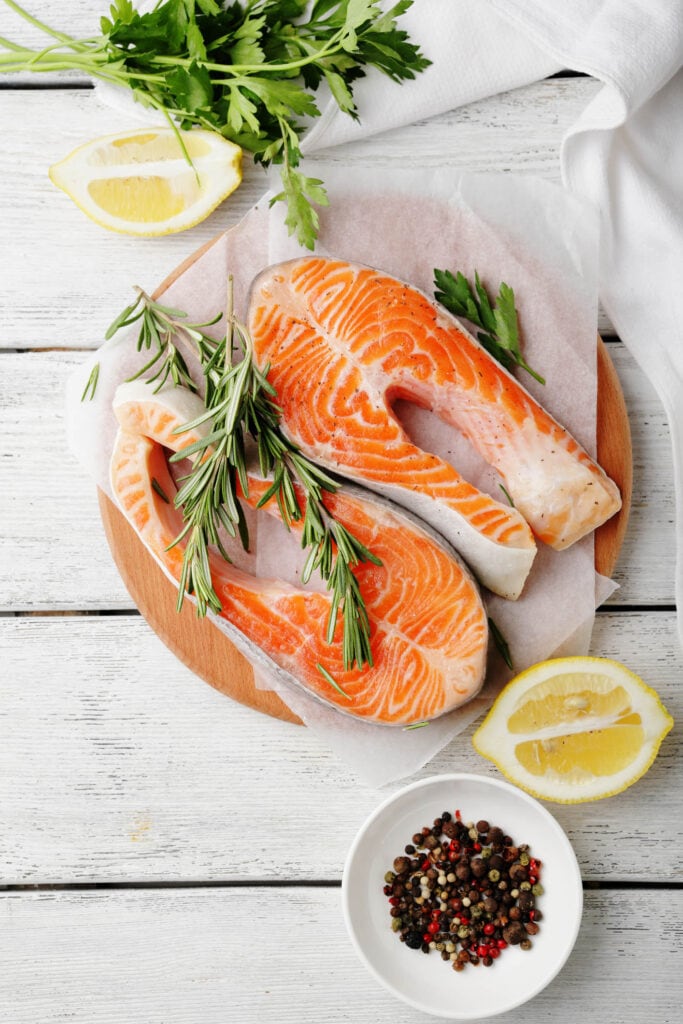
Wine pairings
Full-bodied wines are some of my favorites to pair with rich, tender salmon, such as:
- Chardonnay and Sauvignon Blanc are crisp and light next to salmon.
- You don’t have to follow the “white wine only” rule with salmon. This acidity and hints of earthiness in a light Pinot Noir or a young Beaujolais will also complement the fish.
- Check out this full post on the best wines to pair with salmon.
What goes well with salmon?
Buttery cooked salmon goes well with freshly flavored sides, such as:
- Lemon Pasta
- Zucchini Pasta Salad
- Sous Vide Asparagus
- Grilled Broccolini
- Apple Slaw
- Or, check out these 45+ BEST sides for salmon.
If you loved this trout vs. salmon guide I would appreciate it so much if you would give it a star review! Also, be sure to snap a picture of any of these recipes and share it with me on Instagram using the hashtag #platingsandpairings and tagging me @platingsandpairings.
For more great Platings and Pairings recipes, be sure to follow me on Instagram, TikTok, Pinterest and Facebook.
Salmon vs. Trout: What’s the Difference?
Ingredients
- 4 salmon fillets (or trout filets – 5-6-oz. each)
- 1 pound red potatoes (halved)
- 1 pound fresh green beans (trimmed)
- 5 tablespoons Italian dressing (divided)
- 1 lemon (halved)
- Kosher salt and pepper (to taste)
- Tartar Sauce (for serving (if desired))
Instructions
- Preheat oven to 400°.
- Add potatoes to a large bowl. Drizzle with 2 tablespoons Italian dressing and season with salt and pepper; toss to coat. Arrange potatoes cut-side down on a rimmed baking sheet and roast until potatoes are tender, 20-25 minutes.
- While the potatoes roast, trim green beans and place in the same large bowl used for the potatoes. Drizzle with 2 tablespoons Italian dressing and season with salt and pepper; toss to coat.
- When potatoes are tender, remove from oven and preheat broiler to high.
- Arrange salmon in center of baking sheet with potatoes and add green beans. Drizzle remaining tablespoon Italian dressing over the salmon and season with salt and pepper. Squeeze lemon halves over entire baking sheet and, if desired, slice lemon slices and add to baking sheet.
- Broil salmon, green beans, potatoes, and lemons 10 minutes, or until salmon is no longer translucent but still moist in center and green beans, potatoes, and lemons are lightly browned. Serve with tartar sauce, if desired.
Notes
- If your potatoes are browning too quickly under the broiler, tent them with some tin foil.
- Feel free to use fat-free Italian dressing in this recipe too for a healthier option.
- Swap out the green beans or potatoes for your favorite vegetable. The options are endless!


